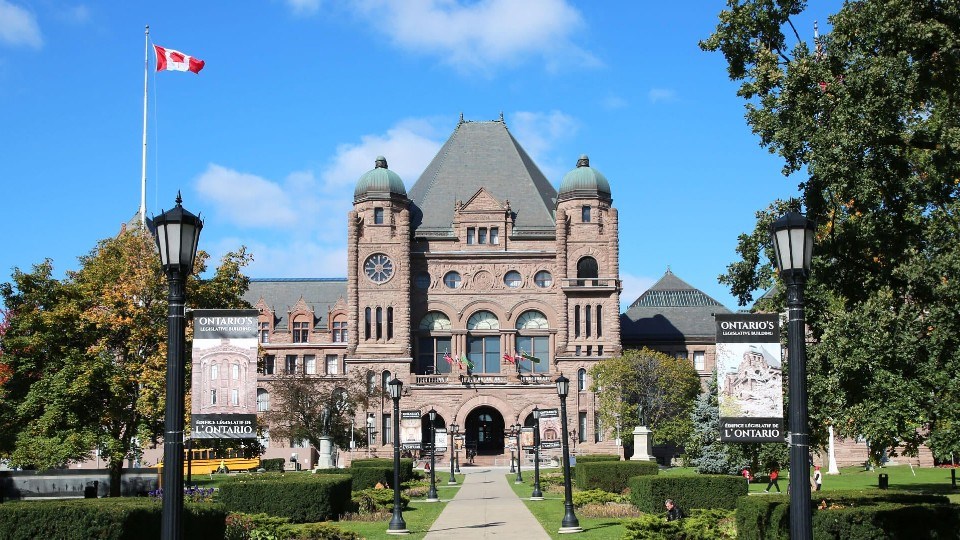Last month, I hosted Hon. Prabmeet Sarkaria, Minister of Transportation, to announce that Request for Proposals (RFP) have been issued by Infrastructure Ontario to twin the Garden City Skyway. This announcement marks another milestone in the province’s plan to reduce gridlock, connect more people to jobs and provide a crucial link between Niagara’s international border crossings and the Greater Golden Horseshoe.
This critical infrastructure project includes the construction of a new four-lane, 2.2-kilometre bridge across the Welland Canal, as well as rehabilitation and full deck replacement of the current span. Once complete, each crossing will have four lanes with the new bridge carrying Toronto-bound traffic and the upgraded existing bridge carrying Niagara-bound traffic.
A key question I have heard from residents is ‘Why do we need to twin the Garden City Skyway’? Some residents are not sure why the Garden City Skyway needs to be expanded, especially since the bridge does not appear to be as congested as some other sections of the QEW.
I want to point out several important reasons why the Garden City Skyway needs to be twinned.
First, the population of the Greater Golden Horseshoe is expected to grow from ten to fifteen million people over the next twenty-five years. With this significant growth comes increased traffic on our roads and bridges, including the QEW. The Skyway is a key bottleneck to adding a fourth lane to the QEW to alleviate congestion and traffic.
A key local priority for me is to secure approval and funding to proceed with widening the QEW from Hamilton to Niagara as increasing congestion impacts the quality of life for local families and job creators. From local manufacturers who produce just-in-time products for the automotive industry to flower growers who ship across Niagara’s international border crossings to busy parents trying to make their kids game on time, congestion has a real cost in time and money.
If we do not twin the Garden City Skyway, the crossing over the Welland Canal will become a major barrier to future expansion, leading to future delays and headaches for drivers across Niagara.
Second, the timelines associated with major infrastructure projects mean we must be proactive and plan for tomorrow. For far too long, previous governments waited until congestion and traffic became a crisis before acting, resulting in a reactive instead of proactive approach to growth. Delayed construction of the Red Hill Valley Parkway in Hamilton is a prime example of a reactive approach to growth. The project was discussed for decades before becoming a reality. In the planning stage of construction, local residents could not imagine that the population of Hamilton Mountain would grow as fast as it did. Some residents argued that the Red Hill Valley Parkway was not necessary, leading to delays that pushed off completion of the project far longer than it should have been.
Third, and perhaps most importantly, the Garden City Skyway is approaching the end of its life cycle and must be rehabilitated to maintain safety and use. It has been explained to me by transportation engineers that because of the construction of the concrete spans and deck of the current span, the rehabilitation of the bridge cannot take place one lane at a time. The entire span must be closed to rehabilitate and replace the deck of the current bridge. This means that without a second bridge to keep traffic moving, commercial vehicles (over 106,000 vehicles a day and growing) travelling into Niagara and crossing our region’s four international border crossings would have to be redirected across lift-bridges crossing the Welland Canal.
One can just imagine the chaos and congestion this would cause throughout the entire region, not to mention the economic impacts of delayed supply chains during the years that the rehabilitation and deck replacement would take.
This proactive construction of the new bridge will prevent the disastrous congestion and gridlock that would be the inevitable result of closing the existing bridge without a replacement span.
For all these reasons, not to mention the many good jobs and local economic growth construction of the new bridge will provide, the twinning of the Garden City Skyway is good news for local commuters, exporters, workers and drivers.



